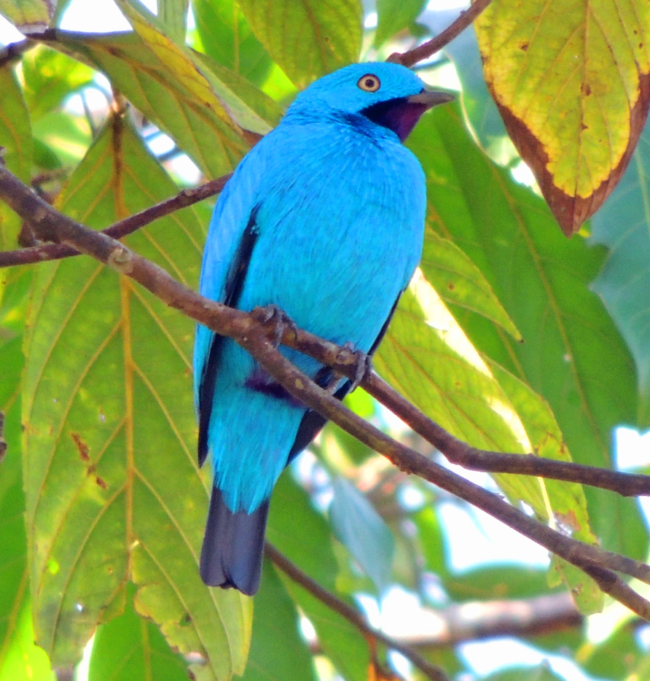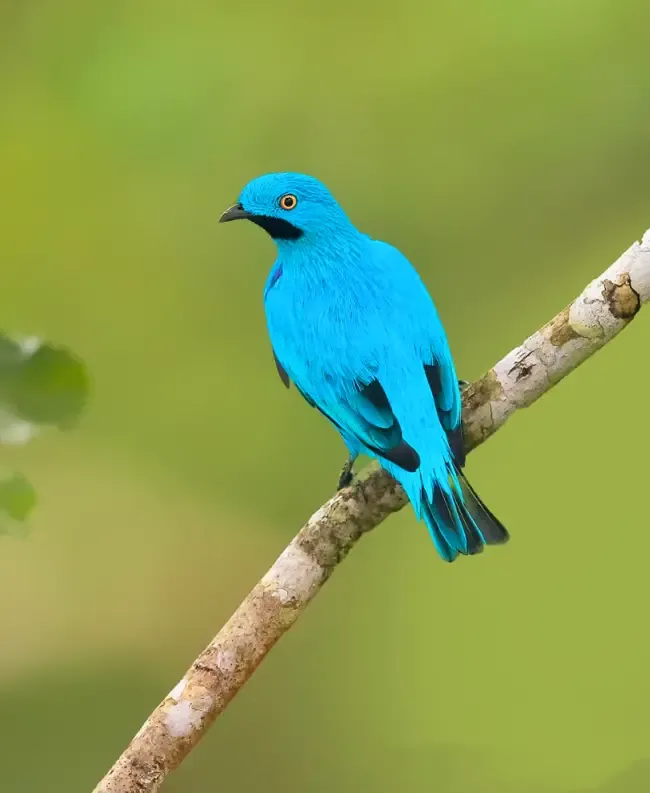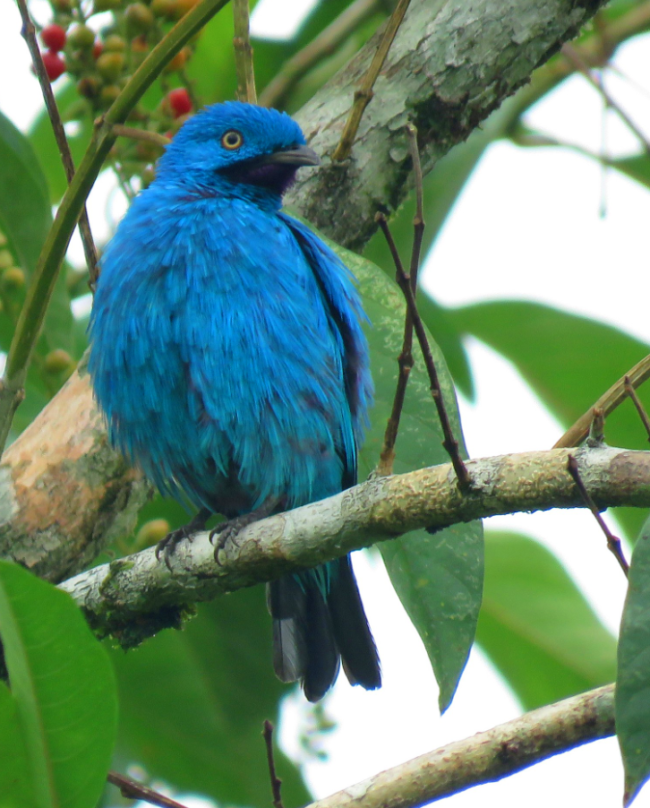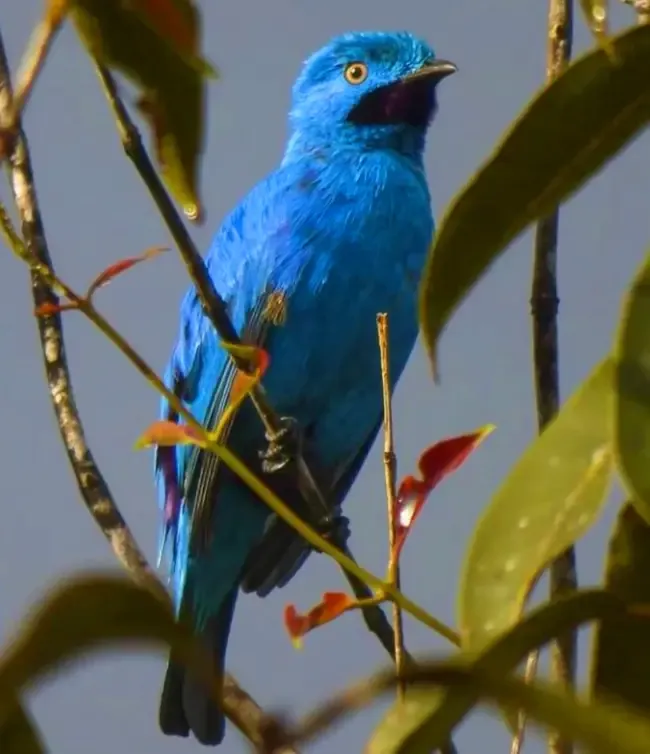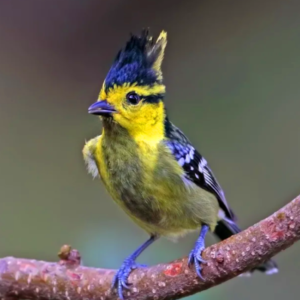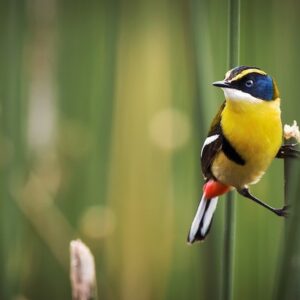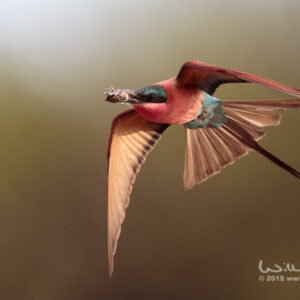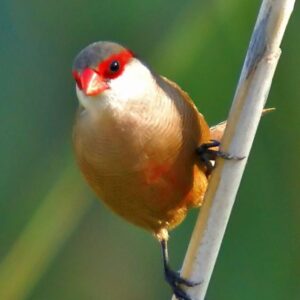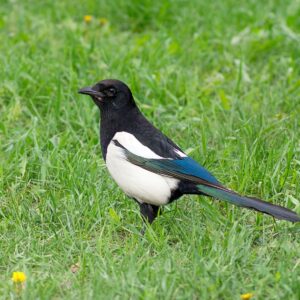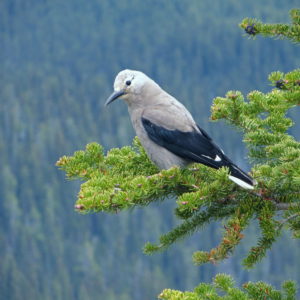The plum-throated cotinga, also known as the tig, is a bird that bird watchers love to observe in the tropical forests of Central and South America, stretching from Nicaragua to Bolivia. This small bird, measuring approximately 6 inches, is famous for its vibrant plumage and unique call.
The male plum-throated cotinga features a striking deep purple throat and breast, complemented by a dazzling blue back and tail. Meanwhile, females sport a lighter colored neck and chest, combined with a greenish-brown back and tail. Both sexes are distinguished by their bright crimson eyes that stand out against their dark feathers.
One of the most notable features of the plum-throated cotinga is its unique call. Male cotingas have a distinctive high-pitched whistle that can be heard from afar. This cry is used to scare away rival males and attract the attention of potential mates. Meanwhile, females of the species use a softer, gentler call to communicate with their offspring.
The plum-throated cotinga’s diet consists mainly of fruits, such as different types of berries and small fruits. They also sometimes eat insects and other small invertebrates. These birds are usually observed in the upper levels of the forest, where they can easily find their favorite foods.
Unfortunately, the plum-throated cotinga, along with many other tropical bird species, is facing danger due to habitat loss and deforestation. The population of these birds is declining as their natural environment is destroyed. Conservation efforts are currently being made to protect its reduced habitat and ensure the survival of this migratory bird in the wild.
The lush rainforests of Central and South America provide habitat for the beautiful and unique plum-throated cotinga bird. With its vibrant feathers and distinctive call, observing this bird is a popular goal for bird enthusiasts. Unfortunately, habitat destruction due to deforestation puts this rare species at risk, highlighting the importance of conservation efforts to ensure its continued existence.
